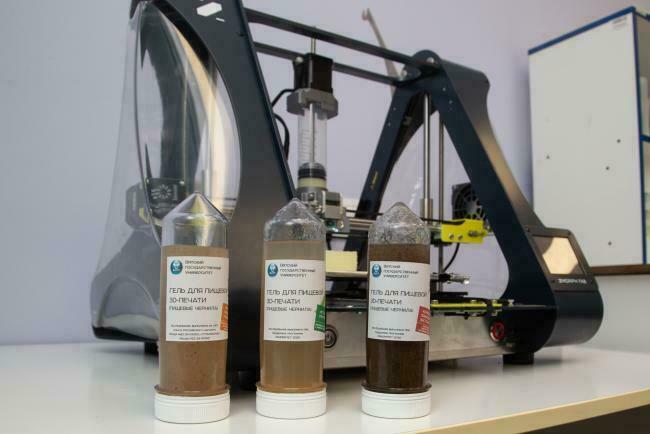Scientific developments of biotechnologists from Vyatka State University in Kirov will be presented at the International Exhibition and Forum “Russia” Posting in CHAT: RussiaAt the International Exhibition and Forum “Russia”, which will open on November 4 at VDNH under the auspices of the Ministry of Science and Higher Education of the Russian Federation, there will be a pavilion dedicated to science and technology in Russia. From all the various areas of research at VyatSU, the organizers of the stand chose the most real technologies of the future - the developments of biotechnologists from VyatGU in the city of Kirov in the field of 3D food printing. We are talking about unique food products and technologies for their production, created in the laboratories of the Institute of Biology and Biotechnology of Vyatka State University as part of the implementation of the strategic project “Healthy Technologies” of the Priority 2030 program. global problem of obesity and overweight. Scientists from one of the largest universities in the Kirov region are developing 3D food printing technologies. This is a method of creating food using the extrusion method, when special food ink is extruded through the nozzle of a 3D printer according to a preset program. Compared to traditional food preparation methods, 3D food printing has several advantages. Firstly, thanks to the use of edible ink, the composition of the finished dish becomes manageable. Nutrients necessary for the human body, for example, dietary fiber, proteins, biologically active substances, can be introduced into the ink, thus supplementing the consumed product. Secondly, 3D food printing allows you to create complex textures in the finished product - this largely determines how a person perceives food and how this affects the feeling of fullness. This fact can be used to control human eating behavior, and we consider 3D food printing as one of the ways to combat overeating, obesity and excess weight. Thirdly, printed products can have a very complex shape, which is important from the point of view of aesthetics, creating an attractive appearance of food products,” explained Sergei Litvinets, Vice-Rector for Science and Innovation of Vyatka State University. In the big topic of food 3D printing, researchers are focusing on developing food inks that contain plant cells and other biotechnologically derived ingredients. Sergey Litvinets said: “The ink contains biotechnologically grown plant callus cells, which have a unique composition, for example, biologically active substances, dietary fiber, etc. For products received for the first time, it is extremely important to confirm that their consumption is safe for human health. In this regard, a large number of tests are being carried out, the results of which show: products obtained by 3D food printing are safe and can be used in human nutrition. Vyatka State University will present three types of edible ink as exhibits in the pavilion of achievements of Russian science. It is an edible ink containing biotechnologically grown plant cells; edible ink based on insect and plant proteins; food ink containing extracts obtained from plant materials and bee products. In addition to them, the exhibition will feature samples of food products produced using 3D food printing. In essence, these are prototypes of products of the near future aimed at improving human health. The team of the strategic project “Health Technologies” reported that work on the creation of new compounds is actively underway - the line of edible inks and healthy food products will be constantly updated. The study was supported by the Russian Science Foundation grant No. 22-24-01060, https://rscf.ru/project/22-24-01060. Source link
